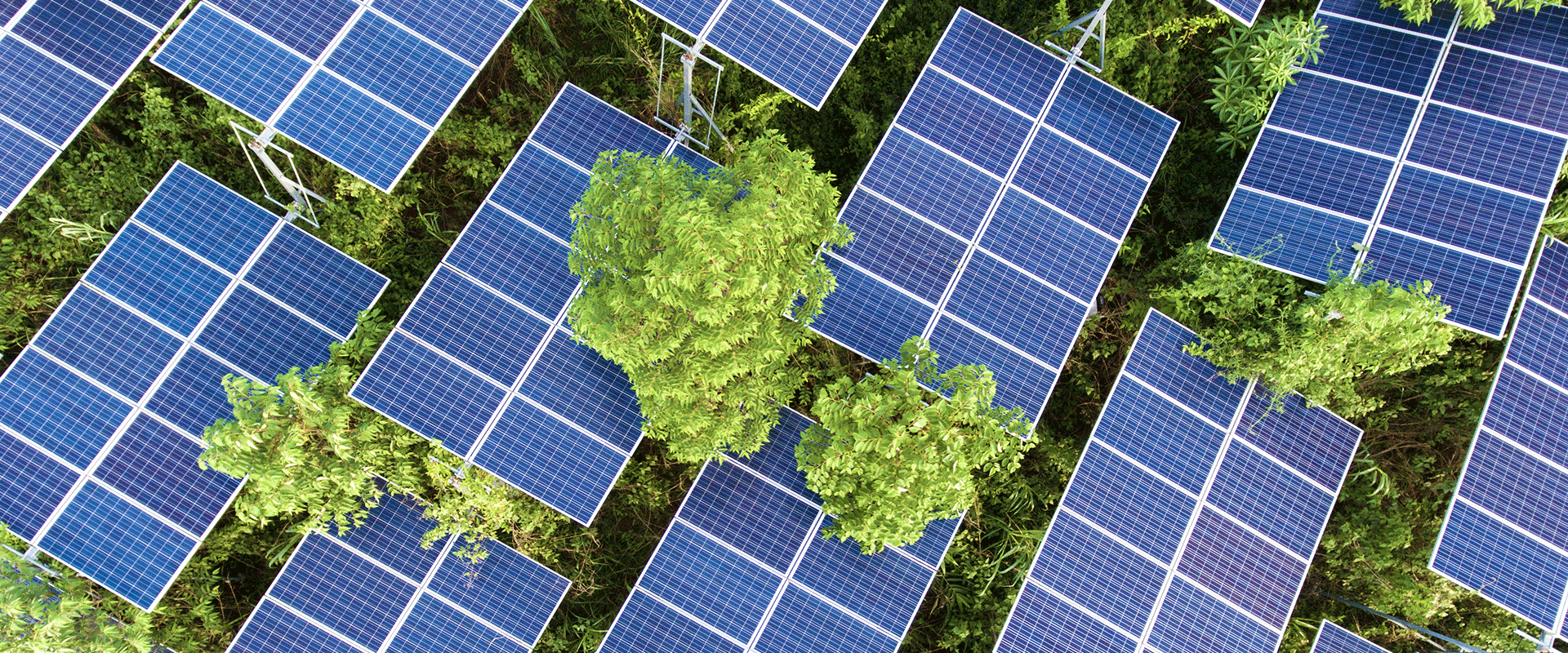We recently held an in-depth conversation about sustainability’s impact on the energy industry with leaders in L.E.K. Consulting’s Energy & Environment practice: Nilesh Dayal, Managing Director and Energy practice sector head; Franco Ciulla, Managing Director; Amar Gujral, Managing Director; and Mazen Skaf, Managing Director. Excerpts from our wide-ranging discussion can be found below.
What does sustainability mean in the energy sector today?
Nilesh Dayal: What sustainability means is evolving. Ten years ago, it was all about energy conservation and reducing the need for power or reducing hydrocarbons through various energy and fuel efficiency initiatives. Today, for L.E.K., the sustainability-in-energy umbrella encompasses everything ESG (environmental, social and governance) for energy companies as well as the broader sector lens of the world’s transition to a lower-carbon energy system.
In the eyes of traditional oil and gas companies, “sustainability” is now as simple as being better stewards of both people and the environment, because ESG adherence and taking steps toward reducing carbon are a license to operate. As a result, some of the leading players are making commitments to emissions reduction, carbon capture, and to even becoming zero-carbon, and this is in turn driving innovation and new entrants in the energy technology space.
The pandemic has seen many of the sustainability trends accelerate, but the momentum was already building.
We hosted a roundtable event with oil and gas CEOs pre-pandemic, and half the conversation was dominated by ESG. These were public and private companies — public companies getting pressure from investors and private companies getting pressure from their funds.
I also took a trip to the Middle East in 2019, and at one of the national oil companies, two different people were talking about, one, what should their carbon strategy be — should they be looking at carbon capture and carbon investments? And two, much broader than that, what should their ESG strategy be? This is a national oil company in the Middle East, a member of OPEC.
To me, this says the mindset has been shifting for more than a few years already, and we have started to see real actions taken across the sector.
Amar Gujral: Sustainability in energy today means everything that is driving and enabling a total transformation of our energy system to lower-carbon solutions. This trend has driven considerable momentum behind clean energy generation and decarbonization. The rise in renewables and solutions such as electric vehicles is in turn driving demand for storage (e.g., battery technology), and there is significant further innovation in new technologies (e.g., green fuels and hydrogen).
As a result, hydrocarbon demand, though still likely to be a meaningful part of the energy mix for decades, is facing a long-term structural decline. And it has to if 44 countries plus European Union members are to meet their announced — and for some, legally binding — net-zero emissions pledges. The climate agenda has for years supported investment and growth in cleaner renewables, though until now it has largely been at the expense of coal rather than oil or gas.
For oil and gas players, there is a varying level of participation today. The European players like Shell, BP and Total are pushing to rapidly transition their portfolios to renewables, while U.S. players Chevron, Exxon and various U.S. independents are, so far, keeping renewables on the radar but not participating meaningfully. Instead, they are focusing on decarbonizing their core oil and gas assets; however, this may change over time. On the other hand, I would not underestimate NOCs (national oil companies), as they are also progressing with their sustainability agenda; the UAE (United Arab Emirates), in particular with ADNOC (Abu Dhabi National Oil Company), is focused on driving sustainable energy through its energy and industrial ecosystem.
Mazen Skaf: Sustainability in the energy industry is about providing cost-effective, reliable and low-carbon energy solutions to various customer segments. To achieve this vision, industry players are making investments across the value chain, from the primary source of energy through production, conversion, transportation and the ultimate consumption by customers. At L.E.K., we are working with our clients across the energy value chain on structuring, evaluating and prioritizing the investments they need to make to achieve their sustainability goals.
Several integrated energy companies such as Equinor, Shell and Total have announced their plans to achieve net-zero emissions by 2050. Both Equinor’s and Shell’s targets cover the emissions from their own operations (Scope 1 and Scope 2 emissions) and the emissions from the use of all energy products that they sell (Scope 3 emissions). This will put pressure on industry peers as well as service providers to enhance their performance on sustainability and potentially commit to achieving net zero. The upcoming COP26 (UN Climate Change Conference of the Parties) summit in Glasgow in November will catalyze further commitments toward achieving net zero among energy companies and service providers.
What’s the impact of sustainability on energy sectors other than oil and gas?
Amar: The impact on renewables is getting a lot of attention. Attention from oil majors, national oil companies, governments, utilities and their rate payers, and attention of course from the broader financial investment community and active players across the renewables ecosystem today. And all the attention is converting into meaningful dollars spent in many cases. Just take a comparison of global energy capital expenditures as evidence. Global renewable energy capital expenditures have increased from annual spend of $135 billion in 2014 to an expected $220 billion for 2021. For a point of contrast, the oil and gas industry spent $735 billion in 2014 versus an expected $350 billion to $400 billion for 2021.1
Electrification is seen as another lever to support the sustainability agenda. This is driving spend in electricity grid infrastructure and supporting technology to enable grid resilience and flexibility such as battery energy storage and grid management software.
Franco Ciulla: Coal demand has also been declining precipitously and will continue to do so globally. The challenge for renewables has been limitations in its dispatchability, and this has led many in the industry to label natural gas as a critical baseload fuel and the bridge to the future non-hydrocarbon-based power generation system.
While a popular viewpoint, this position has been scrutinized lately by both The Economist and Bloomberg New Energy Finance, positioning natural gas’s role in the energy mix as counterintuitive in a pursuit of a net-zero emissions economy. The alternative presented is further development of grid-scale battery storage.
Regardless of natural gas’s ultimate role, we are already expecting PV (photovoltaic) solar plus storage attachment rates to grow, and this will help balance the load curve incongruities created by intermittent generation sources.
In the big picture for exploration and production, for power, for oil and gas, is the sustainability pressure coming from multiple places? Is it from regulations, investors, customers or just a general outlook?
Franco: Yes, pressure is coming from multiple places but mainly from a more stringent regulatory environment, government policy, social scrutiny and more sustainability-oriented investors. The latter has potentially had the greatest influence on E&Ps with investor pressure at both the public and private levels coming in the form of activism at the board level or constraining funding for new investment into oil and gas. The current proxy fight at Exxon is just the latest high-profile example of this.
Mazen: In addition to the pressure from stakeholders and regulators, it is important to point out the rapid advancements and convergence of several technologies that are enabling the transformation of the energy industry and disrupting various traditional business models. For instance, cost reductions in solar PV, onshore wind, and battery technologies will change how electric grids are operated and increase the use of and reliance on renewables and distributed energy resources. In parallel, the declining costs of electric vehicles together with advancements in autonomous driving and increasing use of ride-hailing apps will have significant implications on the use of fossil fuels in the transportation sector and the overall sustainability of the sector. In many parts of the industry, the solutions enabled by technology advancements and the corresponding enhancement in sustainability are further ahead than regulatory requirements.
What sustainability strides have been made in the past few years, and what might we anticipate over the next few years?
Amar: Two key themes of the past few years have been institutional investor pressure for conventional energy companies to take ESG and decarbonization actions as well as an acceleration in the renewable generation capacity build-out, the latter of which we just referenced on the topic of sustainability’s impact on non-oil and gas energy sectors.
The ESG focus is of course not energy specific but has played a strong role in driving sustainability initiatives across the sector. At the start of 2018, global ESG funds only held $0.59 trillion in assets. Today that figure is nearly $2.0 trillion.2
ESG in energy goes beyond the “E” in environment and extends across several issues codified by the United Nations’ sustainable development goals. Take BP, for example, which has revamped its own sustainability agenda with set aims to help the world get to net zero, improve people’s lives and care for our planet. Embedded in this are aims to drive sustainability in ways that support a reduction in emissions intensity, of course, but also poverty elimination, an equitable energy transition, and responsible consumption and production.
Franco: Over the next few years, we should anticipate seeing themes of greater government intervention as well as commercialization of new technologies aimed at supporting net-zero progress for 2030 and beyond. Certainly in the U.S. we have a higher likelihood of some form of carbon emission disincentives, whether directly via taxes or indirectly through other mechanisms, given the strong support from the new Biden administration.
On the technology front, progress is expected in heavy truck electric vehicles, hydrogen production and smart grid technologies to improve grid resilience and flexibility. Success here will be defined by level of investment and cost reduction to bring economics to a point of commercialization rather than by widespread adoption. Time will tell, but stakeholders from all ends of the spectrum are working to solve the economics of these solutions expected to be a critical component to the sector’s drive to net-zero applications.
We’ve touched on investors — public as well as private investors — becoming more and more focused on ESG. What kind of impact is that having?
Mazen: It is important to point out that the investment industry is highly concentrated; the top ten asset managers hold just over one-third of all assets under management. The increased focus of investors on sustainability is driven not only from a social responsibility perspective but also from a prudential and risk management perspective. With the level of concentration in the investment industry, asset managers cannot ignore nor diversify their exposure to climate risk. Add to that the increased awareness among individual investors and their demand from corporate leaders for accountability and commitment to sustainability and to ESG in general. ESG has become a priority on the strategic agenda of various corporations, as it is the “social license to operate” and it is vital for a company to attract and retain its investors and raise capital.
The strategic moves that several integrated energy companies are making in committing to net zero by 2050 (or earlier in some cases) are driven in response to the influence of investors and value chain partners, as well as the increased risk exposure from tighter regulations and potentially higher carbon prices. For instance, in a recent communication, the Bank of England stated that banks and businesses should start assessing their risk exposures to future climate change and prepare for “carbon prices to more than triple to $100 per ton by 2030.” Subsequently, the Bank of England increased its carbon price forecast to $150 per ton by the end of the decade. Leading organizations in the energy industry are taking these risks seriously and increasing their commitment to ESG as a matter of corporate stewardship as well as prudential risk management.
Do you think that this transition in power generation will speed up even more?
Amar: Yes, unequivocally. We just noted the capital expenditure growth for renewables, and as climate goals are pursued, net-zero emissions require considerable cumulative spending in power generation and enabling technologies. This includes wind, solar, and battery manufacturing and metals to support grid-scale energy storage. Critical, though, will be how this power is delivered. Wood Mackenzie recently publicly cited that of the cumulative ~$50 trillion in spending required between now and 2050, $18 trillion will be for power transmission.
In the U.S. specifically, the industry received another shot in the arm with solar ITC (investment tax credit) and wind PTC (production tax credit) extensions in December 2020 and Biden’s announcement for 30 GW of offshore wind development by 2030. With a House and Senate no longer divided, more progress is expected in Congress with additional benefits potentially flowing through budget reconciliations requiring only a simple majority vote. These developments are already accelerating the evolution of grid-scale solar and offshore wind. At the residential and commercial, or distributed energy, levels we have seen costs for rooftop solar and storage come down. Further, utilities are embracing the competition from homeowners and developing programs to support the growth in distributed energy resources. However, utilities also expect to retain some level of control. This will be interesting as at-home generation device counts grow and amass meaningful contributions to the grid, and the “virtual power plant” becomes more common.
Is this being mirrored in international markets?
Franco: No. Europe is a bit ahead of the U.S. in the switch to renewables. Over 25% of the EU electricity generation mix is wind and solar PV compared to approximately 10% for the U.S.
When you look at growth regions around the world — China, India, the Middle East — there is still increasing demand for fossil fuels. The growing middle class in India and China will demand electricity from energy systems still reliant on coal for about half of its generation and will continue to purchase internal combustion engine-based vehicles despite the increasing penetration of electric vehicles (hybrid and pure battery). In that context, oil and gas will continue to be a relevant contributor to the energy mix over the next 15-20 years.
That’s not to say China in particular is not making major strides. China’s 2020 solar installation figure was 48 GW, which is nearly two-thirds the 2019 year-end U.S. installed base. China is similarly ahead in electric vehicle penetration, moving from ~7% in 2020 to ~37% in 2030, according to a recent study published by the MITEI (MIT Energy Initiative). So the transition is underway globally, but the amount of investment required for the conversion to “cleaner” energy sources will be considerable and this may limit the speed at which it can evolve.
What kind of opportunity, or challenge, is hidden in this scenario, or if not hidden, not talked about enough?
Nilesh: Energy is a capital-intensive industry, so things don’t come out of the blue. I think it boils down to who is going to prepare best for energy transition. The general consensus is that momentum is building, but there is disagreement about the pace and the magnitude of how that transition happens.
Some transition is easy, but once it gets to a certain magnitude, you start getting to a second-order effect of complexity. So, thinking about electric cars, for example, having a few percentage points of electric cars running around in the car park — no big deal. The energy systems can handle that. But if suddenly you had 50% electric cars, if you think of a Thanksgiving or Labor Day holiday with that amount of traffic, imagine about half of the cars at a rest stop needing to top off their battery at once. Suddenly, every rest stop becomes the electric equivalent of a steel plant, and you’re going to have to figure out a way to get high-powered transmission lines in every rest stop in order to afford to recharge these cars. If it’s just a few cars, it’s easy, but once you get to a certain scale, it gets a little bit more challenging.
This has implications beyond just energy — for infrastructure players, for mining players for the requirements for electric vehicle (EV) batteries and so on. These markets are only just forming, and each will require the build-out of a complex value chain. One thing for sure is that the transition creates opportunities.
There will be a wide array of agenda items, and with that a wide array of winners and losers as well. The key differentiator ultimately will be rapidly developing a clear understanding of the new energy transition markets that are set to emerge and appropriately adjusting return profiles commensurate with the embedded technological and commercial risks. The most informed tend to win in the most uncertain markets.
Endnotes
1Rystad Energy
2Morningstar



